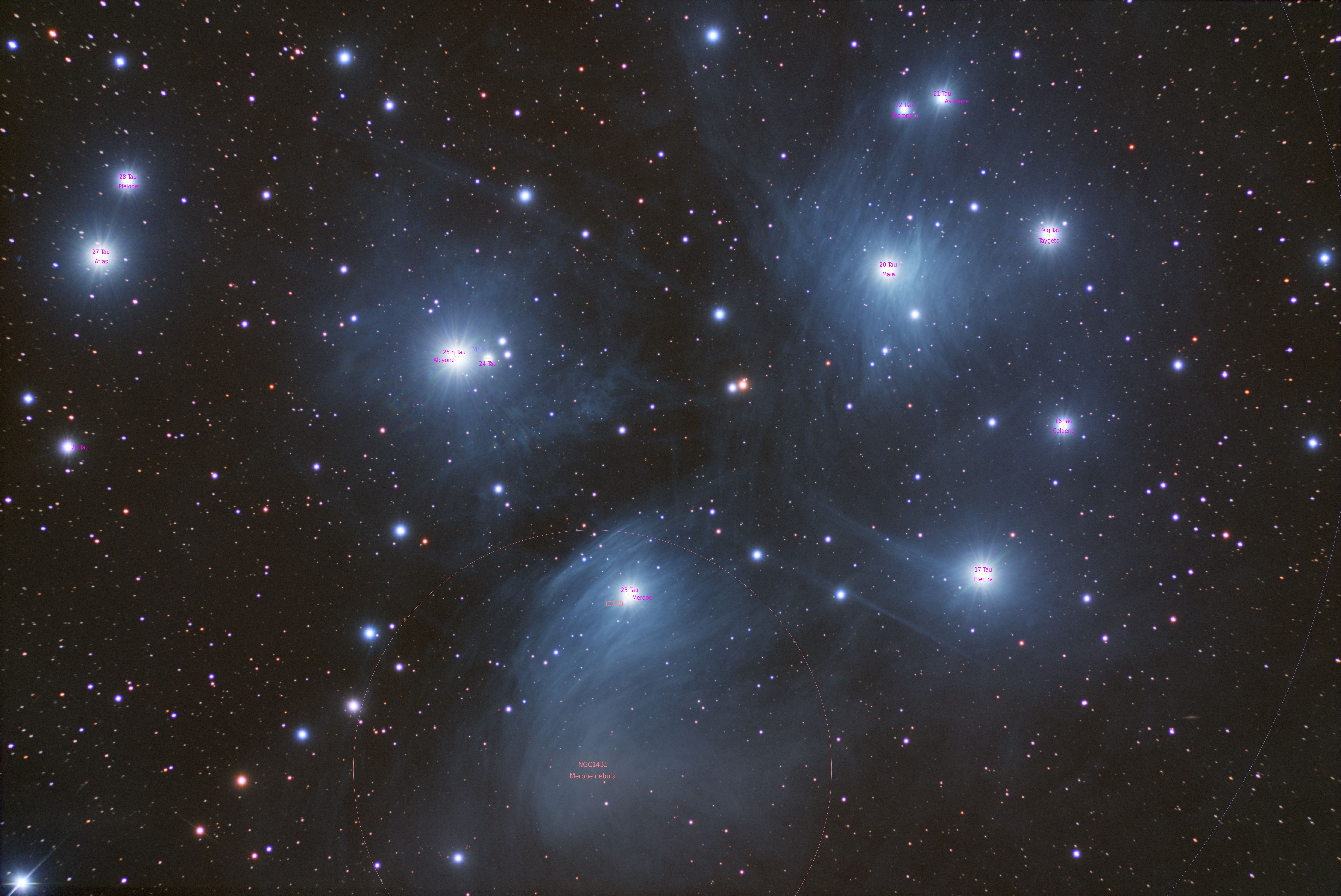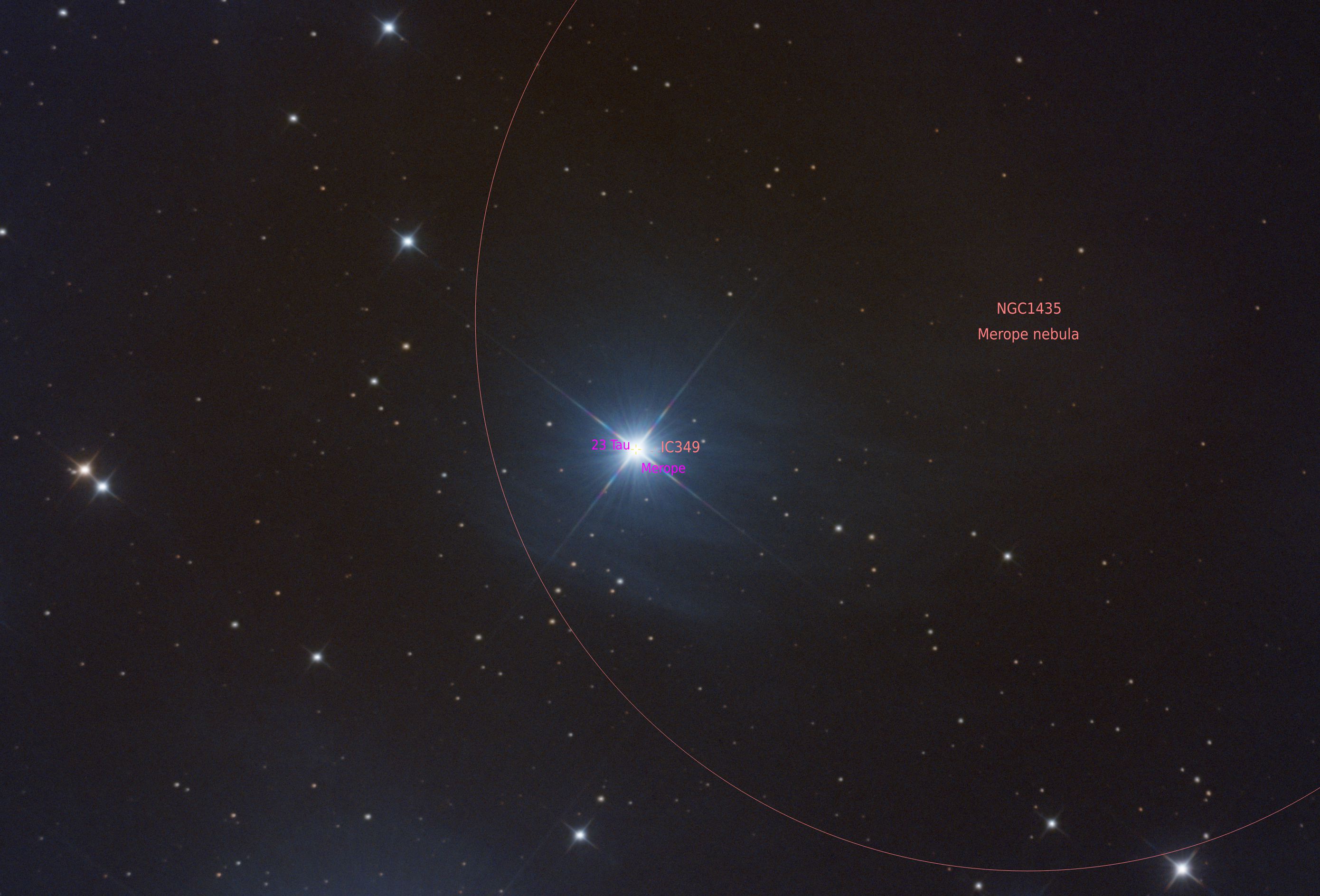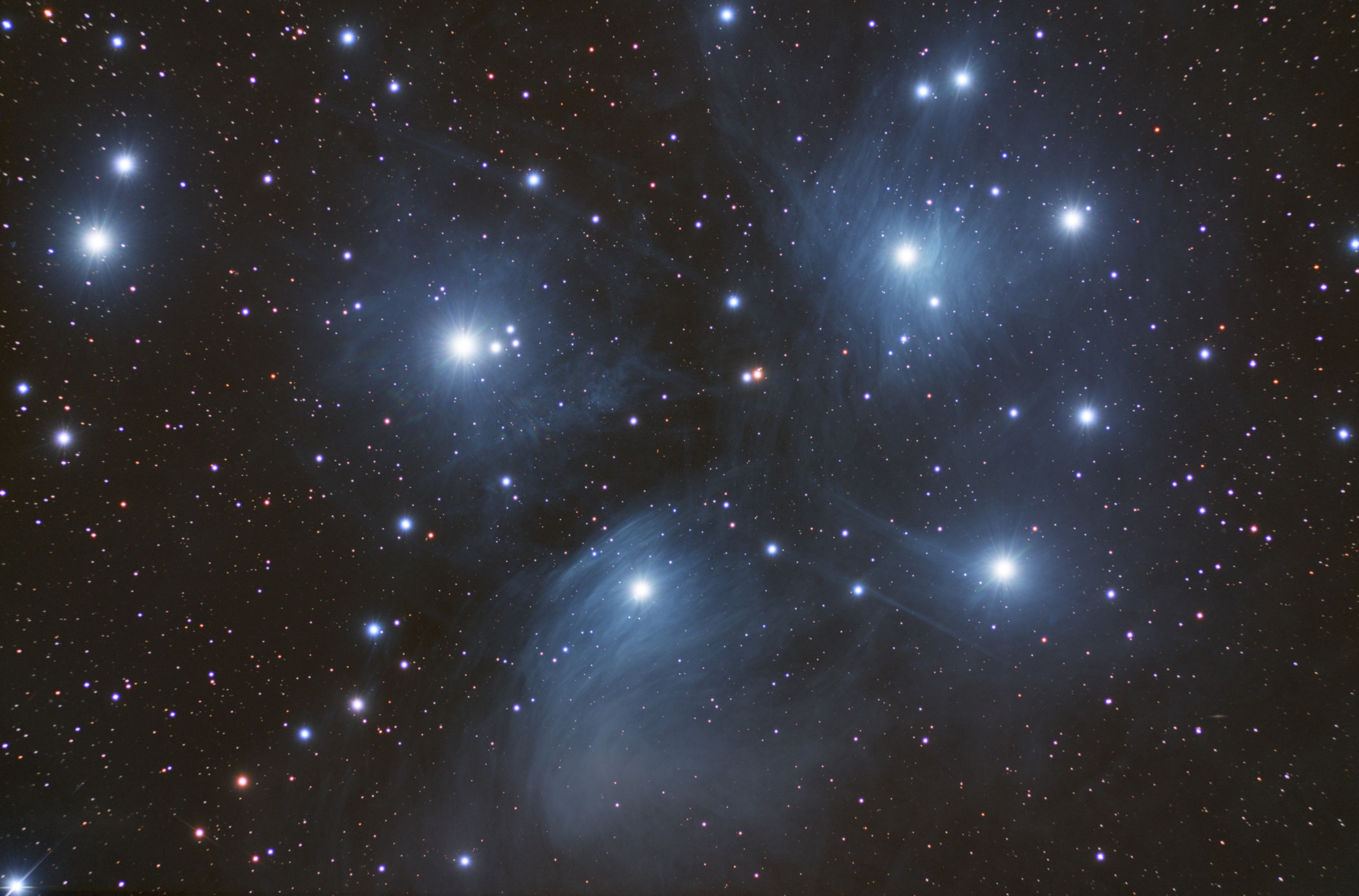Messier 45, one of the more famous open clusters. Often called the Pleiades or the Seven Sisters, with the name Pleiades coming from Greek mythology. The cluster has been known since ancient times, and can be seen as a grouping of 6-7 stars, so it was interesting that Charles Messier included it in his catalog of objects that are not a comet, but could be mistaken for one.
The cluster is surrounded by a reflection nebula that the group is currently passing through, and not related to its original birth in a compact nebula. The cluster consist of at least 1,000 stars located in a radius of 8 light years. The cluster is dominated by hot blue luminous stars, but also contains many brown dwarfs that are not massive enough to initiate nuclear fusion. The estimated age of the cluster is around 100 million years, and its expected to take 250 million years to disperse due to gravitational interactions.

Also a bright knot was discovered around Merope by astronomer Edward Barnard that is being eaten away by the intense radiation from Merope. Due to the dazzling light from Merope, it is difficult to see, and later given the designation of IC 349, or is sometimes referred to as Barnard's Merope Nebula or Merope's Companion.

